17 JUNE 2019
YOUR WORDS
Readers are invited to add their comments to any story. Click on the article to see and add.
BTN DISTRIBUTION
BTN also goes out by email every Sunday night at midnight (UK time). To view this edition click here.
The Business Travel News
PO Box 758
Edgware HA8 4QF
United Kingdom
info@btnews.co.uk
© 2022 Business Travel News Ltd.
Article from BTNews 17 JUNE 2019
Embraer Fifty at Paris
Embraer will have a remarkable presence at the 53rd International Paris Air Show where the company, founded in 1969 August 19th, will celebrate it’s 50 years anniversary. 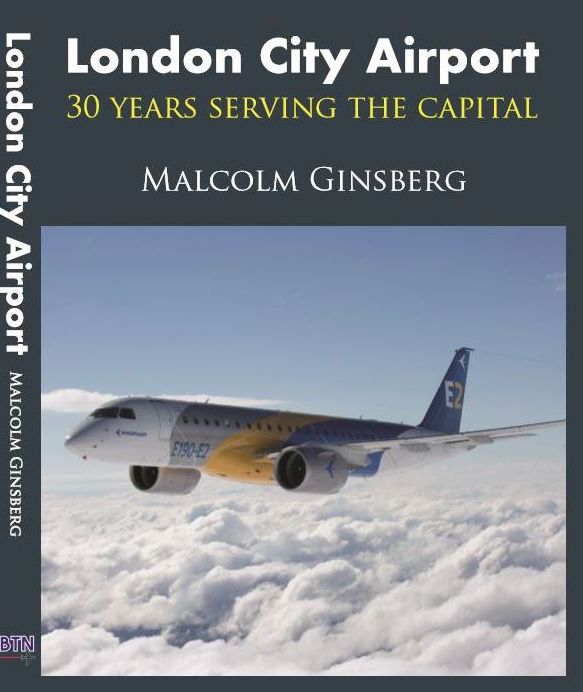 At the event, which opens today (17th to June 23rd )at the cities historical Le Bourget airport, Embraer will have a large exhibition area that includes state-of-the-art aircraft in static and in-flight display, as well as a pavilion dedicated to Embraer's history during half of a century in the aviation industry.
At the event, which opens today (17th to June 23rd )at the cities historical Le Bourget airport, Embraer will have a large exhibition area that includes state-of-the-art aircraft in static and in-flight display, as well as a pavilion dedicated to Embraer's history during half of a century in the aviation industry.
Embraer will showcase in the demonstration area the new E195-E2, of Embraer’s second-generation commercial jet family; the multi-mission airlift and in-flight refueling KC-390; the light attack and training aircraft A-29 Super Tucano; and the Praetor 600, the best executive jet of the super-midsize category already developed.
The remarkable events of Embraer's five decades history will be remembered in a pavilion dedicated to exhibit information and images of the Company's products that have made history in the global aviation industry. The public that goes to the space, which occupies a total area of 300m², can watch the video that presents, in a timeline, the most striking moments of the Brazilian Company, displayed in a LED panel of 14 meters wide.
www.paris-air-show.com
The following is taken from “London City Airport – 30 Years serving the Capital”, pages 139-142 with the special front cover produced for the São José based aircraft company.
Brazil – Aviation and Embraer
Brazil can rightly say it was one of the pioneer nations when it comes to aviation. Alberto Santos-Dumont (1873–1932), usually referred to as simply Santos-Dumont, was a Brazilian innovator/inventor, one of the very few people to have contributed significantly to the development of both lighter-than-air and heavier-than-air aircraft.
The son of a wealthy farmer, engineer and inventor Henrique Dumont, known for a time as the ‘Coffee King of Brazil’, Santos-Dumont was educated in Paris. In his early career he designed, built and flew hot air balloons and early dirigibles, culminating in winning the Deutsch de la Meurthe prize on 19 October 1901 for a flight that circled the Eiffel Tower. This made him world famous. He then turned to heavier-than-air machines, and on 23 October 1906 his model 14-bis made the first powered heavier-than-air flight in Europe to be certified by the Aéro Club de France and the Fédération Aéronautique Internationale. It was a project we might call today ‘design – build – fly’.
In 1904, after Santos-Dumont complained to his friend Louis Cartier about the difficulty of checking his pocket watch during flight, Cartier created his first men's wristwatch, thus allowing Santos-Dumont to check his flight performance while keeping both hands on the controls. Cartier still markets a line of Santos-Dumont watches and sunglasses. 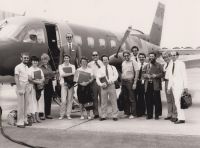 On 12 November 1906 he set the first world record recognized by the Fédération Aéronautique Internationale, by flying 220 metres (722 feet) in 21.5 seconds in his own aircraft. Just as a comparison Usain Bolt would have kept up with him, the world record for 200m being 19.19 seconds.
On 12 November 1906 he set the first world record recognized by the Fédération Aéronautique Internationale, by flying 220 metres (722 feet) in 21.5 seconds in his own aircraft. Just as a comparison Usain Bolt would have kept up with him, the world record for 200m being 19.19 seconds.
By 1910 it was all over. Santos Dumont gave up aviation and with increasing mental health problems faded away, eventually committing suicide in Brazil. He was given a state funeral and is today considered the father of Brazilian aviation. You will not go far in Brazil without seeing something named after Santos-Dumont.
Jump forward to 1969. In the immediate post World War II period Brazil relied for the most part on surplus military aircraft and aeroplanes developed by the major aircraft manufacturers. At General Aviation level Beech, Cessna and Piper reigned supreme. With vast distances between the main conurbations it was a country crying out for a domestic aviation industry.
Seeking to develop a domestic aircraft industry, the Brazilian government made several investments during the 1940s and 1950s without much success. In 1969 Empresa Brasileira de Aeronáutica (Embraer) was created as a State-owned corporation. Home was to be São José dos Campos, already the site of The Instituto Tecnológico de Aeronáutica (ITA) a public institution for higher education and advanced research with emphasis in aerospace science and technology. ITA is rated as one of the top and most prestigious engineering schools in Brazil. In a true multi-national country Brazil was able to recruit specialists from all over the world, including Japan. São José is about 50 miles, or a one hour drive north from São Paulo International Airport.
Under the direction of the first President, the dynamic Ozires Silva, an engineer and government appointee, the company initially produced the EMB 110 Bandeirante unveiling it to the world at the Paris Air Show in 1971.
Straight away it was a big success, a simple unpressured 21-seat turboprop commuter aircraft competing with the more basic de Havilland Twin Otter, and the Dornier 228. When production ceased in 1990 some 500 had been built. 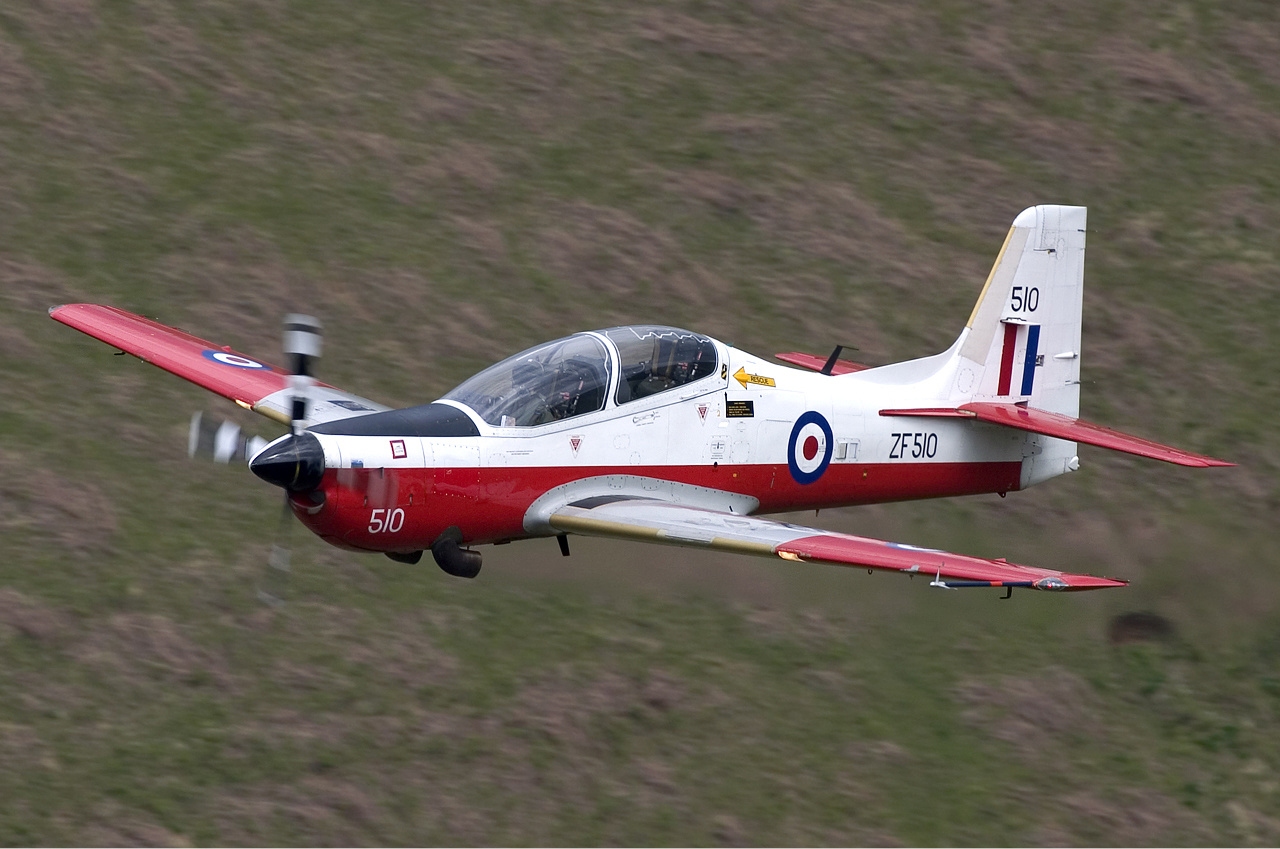 The Bandeirante was succeeded by the EMB 121 Xingu in 1977, with the engines and wings of the Bandeirante and an all new pressurised cabin. With room for eight passengers maximum it could not compete with the high volume production of the then current US aircraft with similar capacity and performance. Only 106 were built.
The Bandeirante was succeeded by the EMB 121 Xingu in 1977, with the engines and wings of the Bandeirante and an all new pressurised cabin. With room for eight passengers maximum it could not compete with the high volume production of the then current US aircraft with similar capacity and performance. Only 106 were built.
Next up was a 30-seat regional fully pressurised aircraft called the EMB 120 Brasilia selling 354 around the world, the aircraft finding much favour with the military. It was built in a 15-year period from 1985 onwards. Over/
A mention must be given at this point to the EMB 312 turboprop two-seat basic military trainer. Now due for retirement, and assembled by Shorts at Belfast, the Tucano has been in RAF service since 1989. A total of 664 units were produced (504 by Embraer and 160 by Short Brothers), flying in 16 air forces over five continents.
Next up, and launched at the Paris Air Show 1989, came the ERJ 135/145, an evolution of the Brasilia, again with 2+1 seating, but a pure jet with engines at the rear. It was to be the first Embraer to operate scheduled services into London City Airport. Including Chinese assembled aircraft and the Legacy corporate version 1,225 have been completed.
Embraer into the 21st CenturyIn 2000, Embraer was listed on the New York Stock Exchange with the government shareholding minimal.
On 29 October 2001 the prototype Embraer E jet was rolled out at São José dos Campos amongst much pomp and ceremony. On hand to share the limelight with the charismatic Embraer Chairman Maurício Botelho was Moritz Suter, then Chief Executive of London City Airport operator Crossair.
Embraer had arrived with the big boys with an aircraft that had no direct rival. Little were we to know then that the E Jet would become in a few short years numerically the largest aircraft at London City Airport, not under a Crossair (later to become part of SWISS) banner, but British Airways.
At the time of writing the combined order book for the original series and the new improved E-Jet E2 family stands at around 1,750 aircraft. It is it the world’s largest selling small regional jet.
Two variants of the aircraft are approved at London City Airport, the E170 and the larger E190. Only British Airways flies the smaller plane offering 76 seats at a seat pitch of 30 inches. Alitalia and KLM also operate the E190 from the airport. All offer 98-100 seats on the E190 in a 2+2 configuration with slightly more space between the seats than on the E170. The BA summer service to the Greek island of Santorini is by far the longest non-stop route, 3½ hours and 1,600 miles.
The fly-by-wire aircraft required no physical modification to perform the approach. The cockpit has a simple switch which commands the number four and five outer wing spoilers to offset slightly while the control column is in a neutral position, creating the drag required to increase the rate of descent. Passengers hardly notice the increased descent angle, increased from 3-degrees normal to 5.5 in order to meet noise restrictions.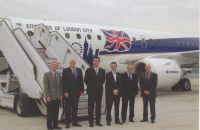 With a very healthy order book for the original aircraft Embraer announced in November 2011 it would be developing revamped versions of the E-Jet family, later to be called the E2. By 2020 when both the original aircraft and its successor will be flying out of London City Airport passengers will never notice that the aircraft have different engines, the original E jet powered by General Electric CF34 and the new machine with a pair of Pratt & Whitney 1000G geared turbofans. Embraer says the E2 will offer 16-24% lower fuel burn and maintenance reduced by 15-25%.
With a very healthy order book for the original aircraft Embraer announced in November 2011 it would be developing revamped versions of the E-Jet family, later to be called the E2. By 2020 when both the original aircraft and its successor will be flying out of London City Airport passengers will never notice that the aircraft have different engines, the original E jet powered by General Electric CF34 and the new machine with a pair of Pratt & Whitney 1000G geared turbofans. Embraer says the E2 will offer 16-24% lower fuel burn and maintenance reduced by 15-25%.
The E190-E2 took its first flight on 23 May 2016 with the prototype one of the stars of Farnborough 2016. By mid-summer 2017 four pre-production aircraft (three E190-E2 and one E19) have accumulated over 700 hours of test flying.
The initial E190-E2 jet is on schedule to be delivered in the first half of 2018 and the launch operator will be Widerøe, the largest Norwegian regional airline. At present they are not a London City Airport customer but its main hub, Oslo Airport, Gardermoen, is within easy reach of London with the new aircraft. At LCY the E190-E2 is expected to offer around 100 seats, the same as the earlier model, but with the 195, not an LCY aircraft, a 144-passenger configuration will be the maximum, a 20-seat increase over the earlier aircraft.
For British Airways, the new aircraft could allow for a full complement of passengers to the Greek islands and also possibly The Canaries. 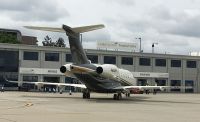 The fly-by-wire system has been revamped but a noticeable feature in the cabin are much larger overhead bins, a 40% increase. The real giveaway is the longer wingspan for the E190-E2 (33.7m versus 28.72m). At London City Airport and its rather tight apron space, only the new easterly extension will accommodate the aircraft. It is nearly as wide as the Airbus A318 (34.1m) but the Bombardier CS100 is broader (35.1m).
The fly-by-wire system has been revamped but a noticeable feature in the cabin are much larger overhead bins, a 40% increase. The real giveaway is the longer wingspan for the E190-E2 (33.7m versus 28.72m). At London City Airport and its rather tight apron space, only the new easterly extension will accommodate the aircraft. It is nearly as wide as the Airbus A318 (34.1m) but the Bombardier CS100 is broader (35.1m).
One very interesting feature of the new E2 is the Panasonic inflight entertainment and connectivity (IFEC) system offering streaming entertainment and wi-fi connectivity services. Passengers can enjoy on-board movies, music, news, and in-cabin services through seat back screens or their own personal devices. The system supports Windows, Mac OS, and iOS devices, as well as browsers including Internet Explorer, Safari, Chrome and Firefox.
The E2 has accrued 275 firm orders, in addition to 415 options, purchase rights, and letters-of-intent, totalling 690 commitments from airline customers and leasing companies. Currently, the E-Jets are operating with about 70 customers in 50 countries, being the global leader in the segment of aircraft with up to 130 seats, with over 50% market share.
OUR READERS' FINEST WORDS (All times and dates are GMT)
All comments are filtered to exclude any excesses but the Editor does not have to agree with what is being said. 100 words maximum
